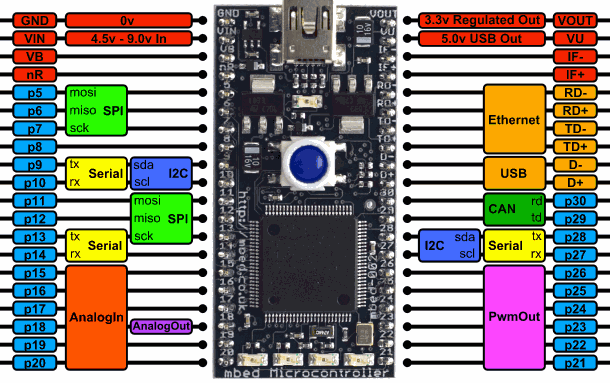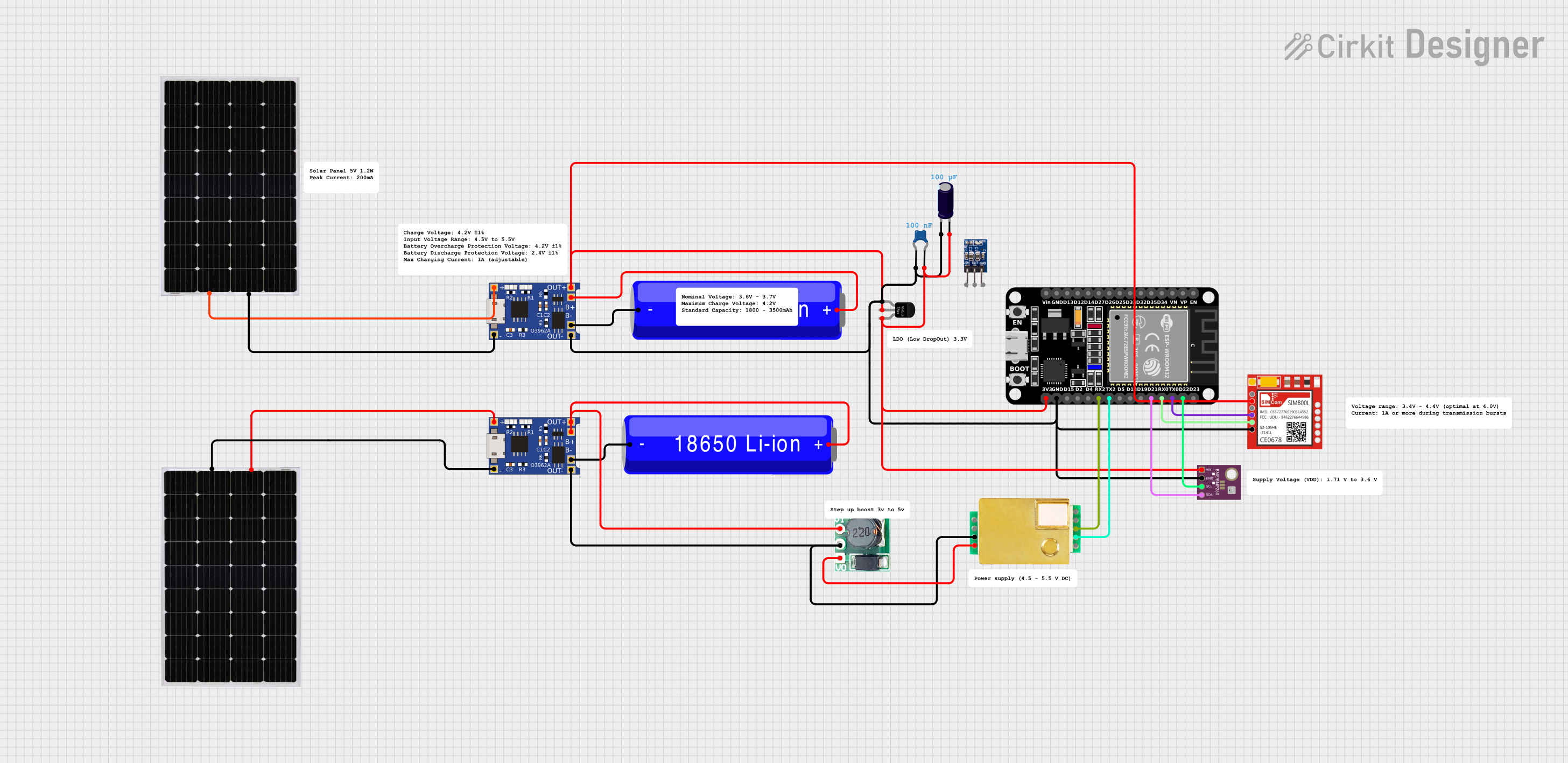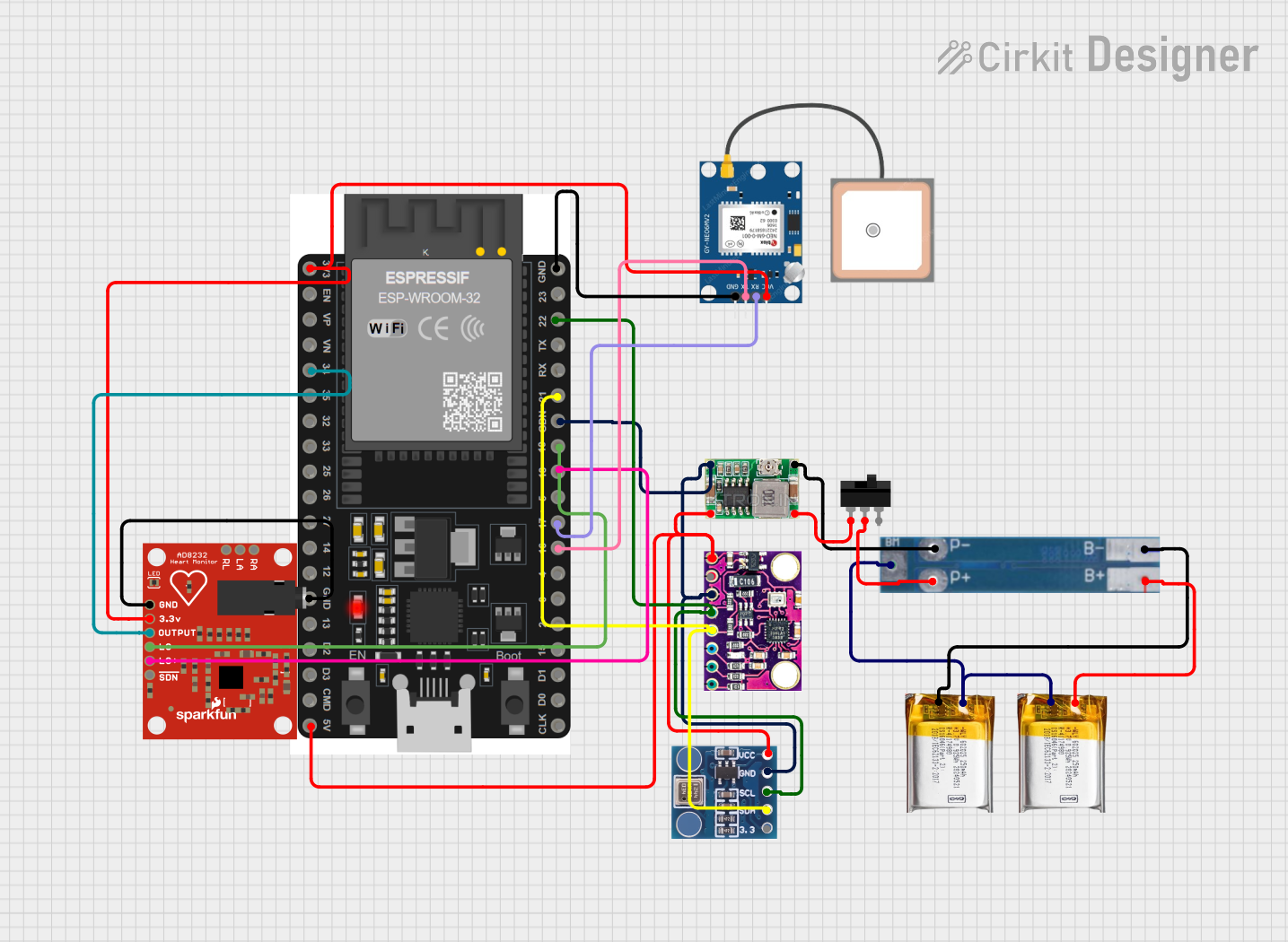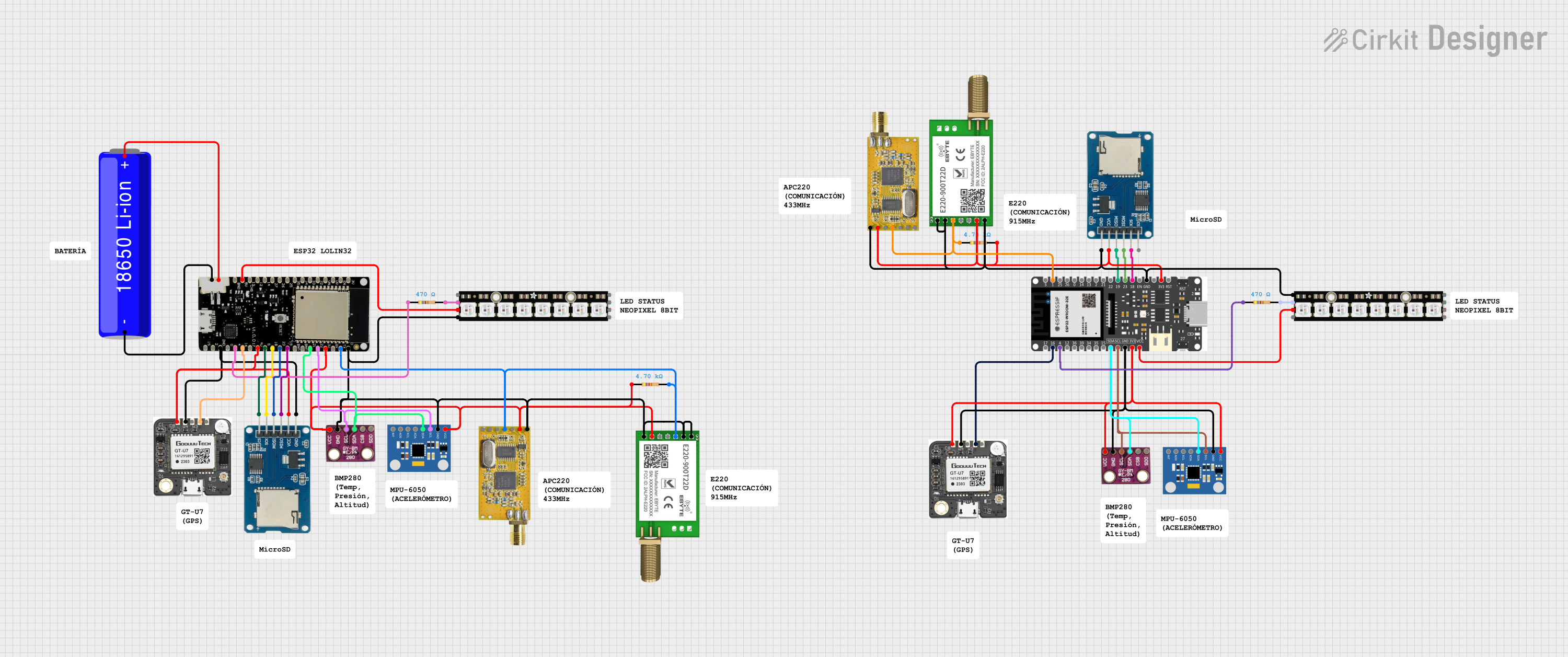
How to Use mbed lpc 1768: Examples, Pinouts, and Specs

 Design with mbed lpc 1768 in Cirkit Designer
Design with mbed lpc 1768 in Cirkit DesignerIntroduction
The mbed LPC1768 is a microcontroller board built around the NXP LPC1768 chip, which features a 32-bit ARM Cortex-M3 core. It is designed for rapid prototyping and development, making it an excellent choice for engineers, hobbyists, and students. The board provides built-in USB support, Ethernet connectivity, and a wide range of I/O options, enabling it to handle diverse embedded applications. Its compact design and compatibility with the mbed online development environment make it a versatile and user-friendly platform.
Explore Projects Built with mbed lpc 1768

 Open Project in Cirkit Designer
Open Project in Cirkit Designer
 Open Project in Cirkit Designer
Open Project in Cirkit Designer
 Open Project in Cirkit Designer
Open Project in Cirkit Designer
 Open Project in Cirkit Designer
Open Project in Cirkit DesignerExplore Projects Built with mbed lpc 1768

 Open Project in Cirkit Designer
Open Project in Cirkit Designer
 Open Project in Cirkit Designer
Open Project in Cirkit Designer
 Open Project in Cirkit Designer
Open Project in Cirkit Designer
 Open Project in Cirkit Designer
Open Project in Cirkit DesignerCommon Applications and Use Cases
- IoT (Internet of Things) devices
- Robotics and automation systems
- Data acquisition and processing
- Prototyping for industrial control systems
- Educational projects and research
Technical Specifications
The mbed LPC1768 offers a robust set of features and specifications, making it suitable for a variety of applications.
Key Technical Details
- Microcontroller: NXP LPC1768 (ARM Cortex-M3, 32-bit)
- Clock Speed: 96 MHz
- Flash Memory: 512 KB
- RAM: 64 KB
- Digital I/O Pins: 40
- Analog Input Pins: 6 (12-bit ADC)
- Analog Output Pins: 1 (10-bit DAC)
- Communication Interfaces: UART, SPI, I2C, CAN, Ethernet
- Power Supply: 4.5V to 9V (via VIN) or 5V (via USB)
- USB Support: USB 2.0 (Full Speed)
- Dimensions: 54 mm x 26 mm
Pin Configuration and Descriptions
The mbed LPC1768 has a 40-pin DIP form factor. Below is a summary of the pin configuration:
| Pin | Name | Description |
|---|---|---|
| 1 | VOUT | 3.3V output |
| 2 | GND | Ground |
| 3 | p5 | Digital I/O or ADC input (AIN0) |
| 4 | p6 | Digital I/O or ADC input (AIN1) |
| 5 | p7 | Digital I/O or ADC input (AIN2) |
| 6 | p8 | Digital I/O or ADC input (AIN3) |
| 7 | p9 | Digital I/O or ADC input (AIN4) |
| 8 | p10 | Digital I/O or ADC input (AIN5) |
| 9 | p11 | Digital I/O or UART TX |
| 10 | p12 | Digital I/O or UART RX |
| ... | ... | ... |
| 39 | VIN | Power input (4.5V to 9V) |
| 40 | USB | USB power and communication |
For a complete pinout diagram, refer to the official mbed LPC1768 datasheet.
Usage Instructions
How to Use the mbed LPC1768 in a Circuit
Powering the Board:
- Connect the board to a computer via a USB cable for power and programming.
- Alternatively, supply 4.5V to 9V to the VIN pin for standalone operation.
Programming the Board:
- Use the mbed online compiler (https://os.mbed.com/compiler/) to write and compile your code.
- Drag and drop the compiled binary file onto the mbed LPC1768, which appears as a USB mass storage device.
Connecting Peripherals:
- Use the digital and analog pins to interface with sensors, actuators, and other devices.
- Utilize communication interfaces (UART, SPI, I2C) for advanced peripherals.
Important Considerations and Best Practices
- Ensure the power supply voltage does not exceed the specified range to avoid damaging the board.
- Use pull-up or pull-down resistors for unused input pins to prevent floating states.
- Avoid drawing excessive current from the 3.3V VOUT pin, as it is limited to 70 mA.
- When using Ethernet, ensure proper grounding and shielding to minimize noise.
Example Code for Arduino-Compatible Usage
The mbed LPC1768 can be programmed using the mbed online compiler. Below is an example of blinking an LED connected to pin p21:
#include "mbed.h"
// Define an LED object connected to pin p21
DigitalOut led(p21);
int main() {
while (true) {
led = 1; // Turn the LED on
wait(0.5); // Wait for 500 ms
led = 0; // Turn the LED off
wait(0.5); // Wait for 500 ms
}
}
Notes:
- Replace
p21with the pin number where your LED is connected. - The
wait()function introduces a delay in seconds.
Troubleshooting and FAQs
Common Issues and Solutions
The board is not recognized by the computer:
- Ensure the USB cable is functional and supports data transfer.
- Check if the board is properly powered.
- Try connecting to a different USB port or computer.
Code does not run after uploading:
- Verify that the binary file was successfully copied to the board.
- Ensure the code is compiled for the correct target (mbed LPC1768).
- Check for errors in the code, such as incorrect pin assignments.
Ethernet connection is not working:
- Confirm that the Ethernet cable is securely connected.
- Verify the network configuration in your code (e.g., IP address, subnet mask).
- Test the network connection with a different device.
Analog readings are inaccurate:
- Ensure the input voltage does not exceed the ADC reference voltage (3.3V).
- Use proper grounding and shielding to reduce noise.
FAQs
Can I use the mbed LPC1768 with Arduino IDE?
No, the mbed LPC1768 is not directly compatible with the Arduino IDE. Use the mbed online compiler or other ARM-compatible development tools.What is the maximum current output of the GPIO pins?
Each GPIO pin can source or sink up to 4 mA. For higher currents, use external drivers.Can I power the board with a LiPo battery?
Yes, as long as the voltage is within the 4.5V to 9V range. Use a voltage regulator if necessary.Is the mbed LPC1768 suitable for low-power applications?
Yes, the ARM Cortex-M3 core supports low-power modes, but additional optimization may be required in your code.
This concludes the documentation for the mbed LPC1768. For further details, refer to the official mbed documentation and datasheets.